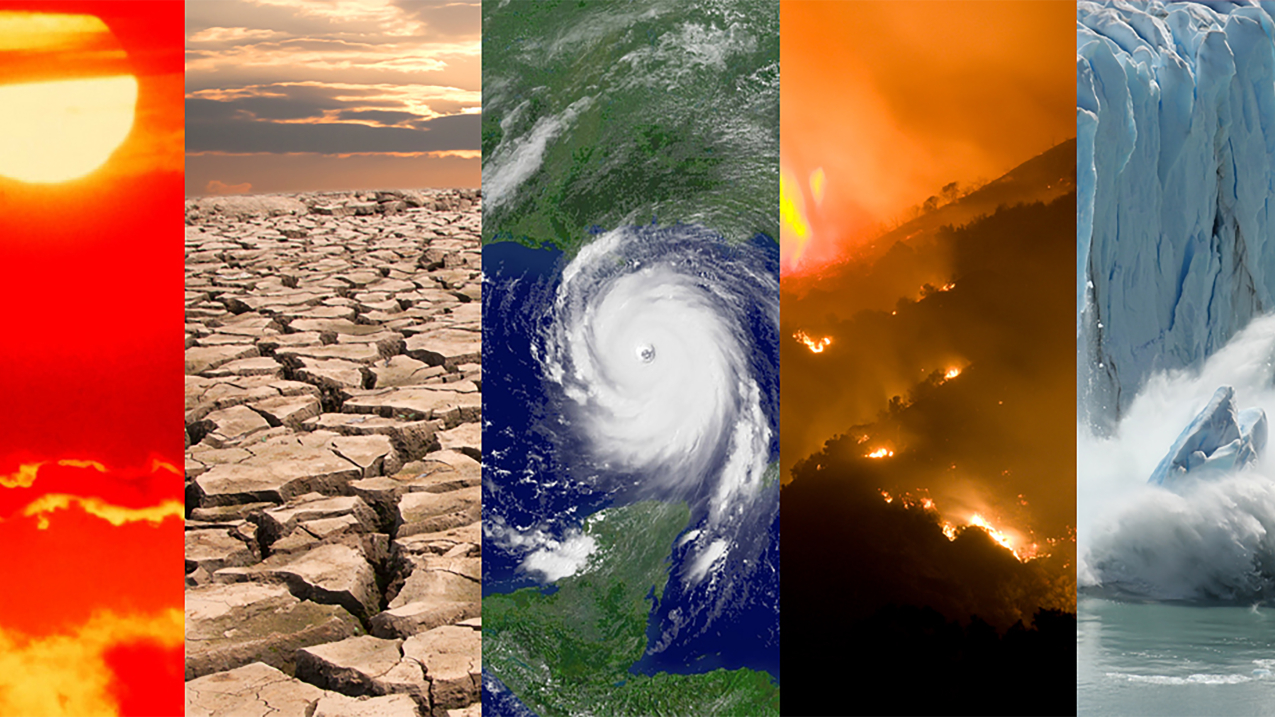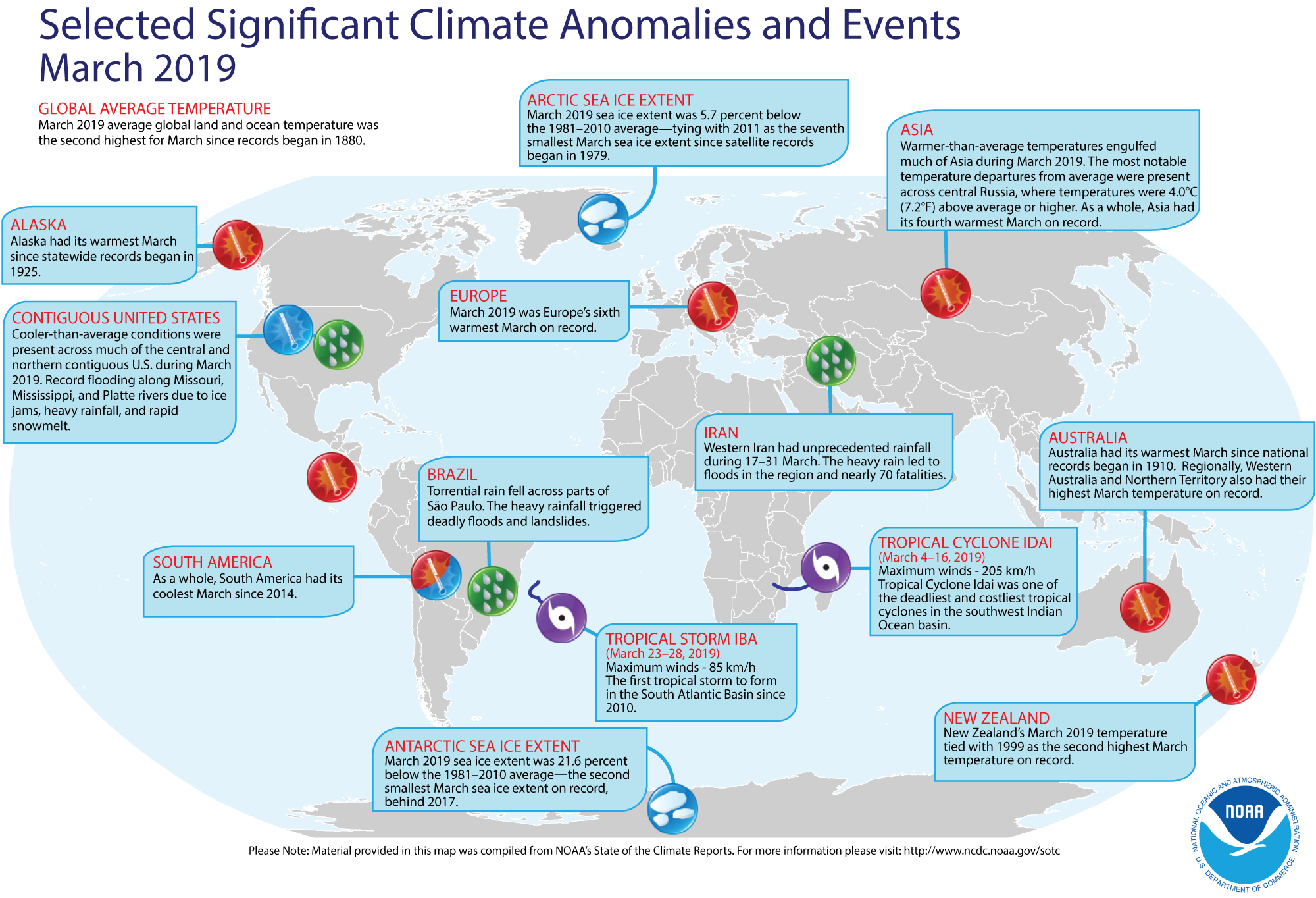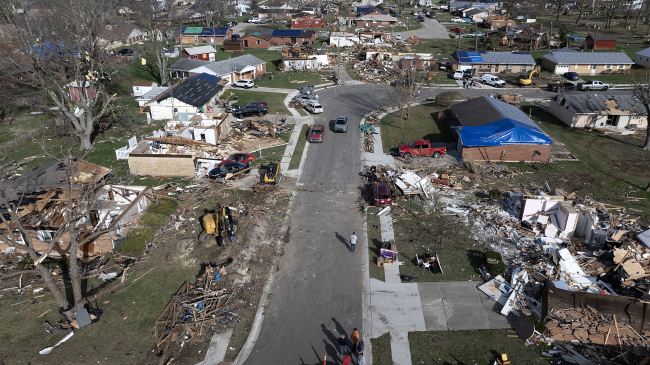
A collage of typical climate and weather-related events: heatwaves, drought, hurricanes, wildfires and changes in sea ice coverage. (Image credit: NOAA)
Sweltering conditions around the world last month made March 2019 the second-hottest March on record for planet Earth, after March 2016.
Also, the first quarter of 2019 ended as the third warmest on record for the globe, according to scientists at NOAA’s National Centers for Environmental Information.
Here are more highlights from NOAA’s latest monthly global climate report:
Climate by the numbers
March 2019
The average global temperature in March was 1.91 degrees F above the 20th-century average of 54.9 degrees F, making it the second-hottest March on record in the 140-year record (1880–2019). Last month also was the 43rd consecutive March and 411 consecutive month with global temperatures above average.
The year to date I January through March
The period from January through March saw a global temperature 1.62 degrees F above the average of 54.1 degrees, making it the third-hottest YTD on record. The highest temperature departures from average were found in areas across Australia, southwestern and central Asia, Alaska and northwestern Canada.

Other noteworthy global climate facts and stats
-
Polar sea-ice coverage remained smaller than average: Average Arctic sea ice coverage (extent) in March was 5.7 percent below the 1981-2010 average, tying 2011 as the seventh smallest for March on record. The Antarctic sea ice extent was 21.6 percent below average, the second smallest for March on record.
-
A swath of heat spanned the globe: Record-hot YTD temperatures were felt across parts of Australia, northern Alaska, northwestern Canada, southern Brazil, the Barents Sea, the Tasman and East China seas, and in scattered areas across all the southern oceans.
More > Access this and other NOAA monthly climate reports and download related maps and images.
Media contact
John Leslie, (301) 713-0214



